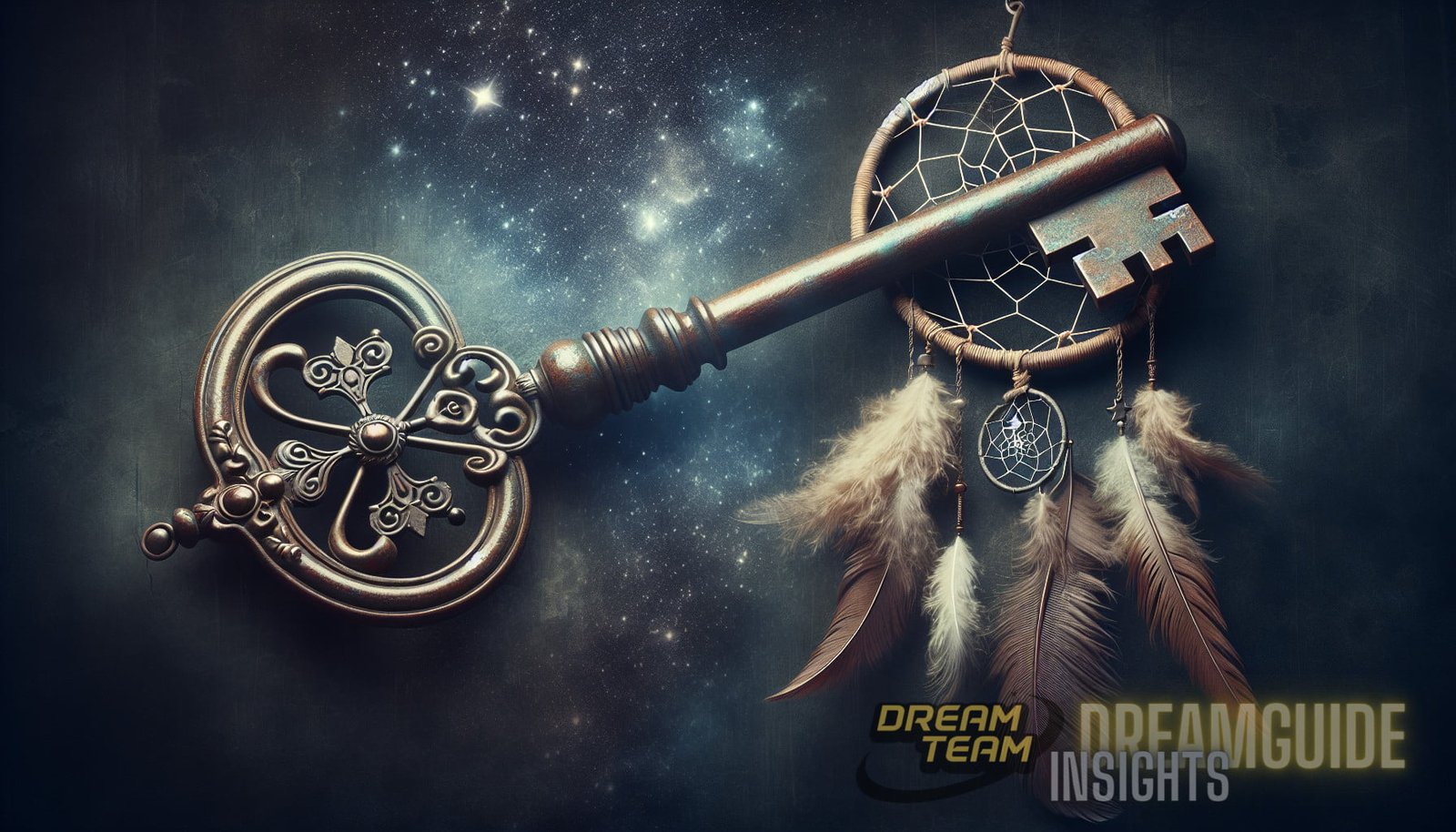Introduction
Dreams have long fascinated humans and have been the subject of interpretation and analysis since ancient times. The enigmatic link between symbolism and dream interpretation has intrigued psychologists, philosophers, and scholars throughout history. Dreams offer a glimpse into the depths of the unconscious mind, revealing hidden desires, fears, and emotions. In this article, we delve into the world of symbolic dreams and explore their profound meaning and significance.
The Nature of Dreams: An Unconscious Exploration
Dreams occur during a state known as rapid eye movement (REM) sleep, characterized by intense brain activity. During this phase, the brain’s cortex, responsible for information processing and conscious thought, is relatively inactive, while the limbic system, the area associated with emotions and instinctual behavior, takes center stage.
Freudian psychoanalysis suggested that dreams serve as a form of wish fulfillment, providing an outlet for repressed desires and emotions. According to Freud, every dream contains both manifest content, which is the literal events and images experienced during the dream, and latent content, which represents the hidden meaning and symbols within the dream.
Nowadays, the understanding of dreams has evolved, and alternative theories have emerged. Cognitive theories propose that dreams serve an important role in memory consolidation and processing emotions. They suggest that dream scenarios often incorporate recent experiences and emotions, facilitating their assimilation into long-term memory.
Regardless of the specific theoretical framework, it is clear that dreams provide valuable insight into the workings of the unconscious mind. The use of symbolism in dreams is particularly significant, as it allows for the expression of complex ideas and emotions that may be difficult to articulate in waking life.
Symbolism in Dream Interpretation
Symbols in dreams serve as a bridge between the conscious and unconscious mind. They represent hidden meanings and offer a window into the deeper layers of the psyche. Understanding the symbolic language of dreams can unlock profound insights and provide a deeper understanding of one’s inner self.
Symbolic dreams often involve archetypes, universal symbols that are deeply ingrained in the collective unconscious. These archetypes, such as the hero or the shadow, represent fundamental aspects of human experience and can be found across cultures and time periods.
Carl Jung, a prominent Swiss psychiatrist and psychoanalyst, played a key role in elucidating the importance of symbolism in dreams. He believed that dreams are a reflection of the individual’s personal and collective unconscious and that they contain symbols that represent unfulfilled desires and unrecognized aspects of the self.
Jungian dream analysis emphasizes the individuation process, which involves integrating all aspects of the self, including the shadow, the anima/animus, and the persona. Through dream analysis, individuals can gain insight into their unconscious conflicts and work towards achieving a greater sense of wholeness and self-actualization.
Unraveling the Depths of Symbolic Dreams
1. Archetypal Symbols
In symbolic dreams, archetypal symbols often appear and carry profound meaning. These symbols transcend cultural boundaries, resonating with individuals across different backgrounds and experiences. Some common archetypal symbols found in dreams include:
- The Shadow: The shadow represents the darker, repressed aspects of the self. It often appears as a symbol of the unconscious desires and motivations that the dreamer has not fully acknowledged.
- The Anima/Animus: The anima represents the feminine qualities within a male dreamer, while the animus represents the masculine qualities within a female dreamer. These symbols often reflect the integration or disintegration of gender-related traits and can provide insights into the individual’s relationship with their own femininity or masculinity.
- The Persona: The persona represents the mask that an individual wears in their interactions with others. In dreams, the persona can be depicted as a symbol of the individual’s public image or the façade they present to the world.
These archetypal symbols in dreams serve as a mirror of the unconscious mind, reflecting deep-seated desires, fears, and unresolved conflicts. Exploring these symbols can lead to a greater understanding of oneself and facilitate personal growth and transformation.
2. Cultural and Personal Symbols
In addition to archetypal symbols, symbolic dreams often incorporate cultural and personal symbols that hold specific meaning for the dreamer. Cultural symbols can include religious icons, national symbols, or symbols associated with specific cultural practices or beliefs.
Personal symbols, on the other hand, are unique to the individual and can represent their personal experiences, memories, and beliefs. These symbols may be derived from personal experiences, relationships, or specific events in the dreamer’s life.
For example, a butterfly may symbolize transformation and growth for one individual, while for another, it may represent the fleeting nature of beauty and youth. The interpretation of these symbols depends on the personal associations and meanings assigned to them by the dreamer.

Methods of Symbolic Dream Interpretation
Interpreting the symbols in a dream requires a deep understanding of the individual’s personal experiences, beliefs, and cultural background. Various methods and techniques have been developed to facilitate the interpretation of symbolic dreams:
1. Free Association
Free association involves allowing the mind to wander and making spontaneous associations with the symbols and events in a dream. By allowing the unconscious mind to express itself freely, this technique can uncover hidden meanings and provide insights into the underlying emotions and conflicts depicted in the dream.
For example, if a dreamer sees a snake in their dream, they may associate it with feelings of danger, fear, or transformation. Through free association, the dreamer may unravel deeper layers of meaning related to their relationship with power, sexuality, or personal growth.
2. Amplification
Amplification involves exploring the symbolic meaning of a dream image or event by drawing upon various cultural, mythological, or historical references. By expanding the meaning of a symbol through association with other related symbols, amplification can reveal hidden aspects and facilitate a more comprehensive understanding of the dream.
For example, if a dreamer sees a lion in their dream, amplification may involve exploring the cultural and historical associations of lions, such as their representation of power and courage in ancient civilizations. This can provide valuable insights into the dreamer’s personal relationship with power dynamics and assertiveness.
3. Active Imagination
Active imagination is a technique developed by Carl Jung that involves engaging with the symbolic images and characters of a dream through visualization and dialogue. By actively engaging with the dream content, individuals can gain a deeper understanding of the unconscious dynamics and conflicts depicted in the dream.
For example, if a dreamer encounters a mysterious figure in their dream, they can engage in a dialogue with this figure during a waking state, exploring their motives, desires, or fears. Through active imagination, the dreamer can gain insight into the hidden aspects of their psyche and potentially resolve unconscious conflicts.
Scientific Perspectives on Dream Interpretation
While dream interpretation has a long history and has provided valuable insights into the human psyche, it is important to approach the subject with scientific rigor. In recent years, scientific research has shed light on the neural mechanisms underlying dreaming and the potential benefits of dream analysis:
- Neuroscientific studies have identified specific brain regions and networks that are active during dreaming, including the prefrontal cortex, the limbic system, and the default mode network. These findings support the notion that dreams serve important cognitive and emotional functions.
- Research has shown that dream analysis can have therapeutic benefits, aiding in the resolution of emotional conflicts, promoting self-reflection, and enhancing overall psychological well-being. Dreamwork techniques, such as active imagination and free association, have been integrated into various therapeutic approaches, including Jungian analysis and psychoanalytic therapy.
While dream interpretation remains a subjective and personal process, incorporating scientific findings can provide a solid foundation for understanding the psychological processes at play and ensuring a well-rounded approach to dream analysis.
Conclusion
Symbolic dreams offer a fascinating glimpse into the unconscious mind, allowing individuals to explore their deepest desires, fears, and emotions. By understanding the symbolism inherent in dreams, individuals can gain valuable insights into their inner selves and unlock the potential for personal growth and self-actualization. While dream interpretation remains a complex and subjective endeavor, incorporating scientific perspectives and techniques can enhance the understanding and significance of symbolic dreams. Through a deeper exploration of the enigmatic link between symbolism and dream interpretation, we can unravel the depths of the unconscious mind and tap into the limitless potential of the human psyche.
For further reading on the topic of symbolic dreams, you may find the following articles useful:
- An article available here provides a comprehensive exploration of dream symbolism and its significance in understanding the unconscious mind.
- An article available here delves into the power of dream characters and their role in cognitive processing.
By delving into the depths of symbolic dreams and unraveling their enigmatic link to dream interpretation, we open ourselves up to a world of self-discovery and inner transformation.



